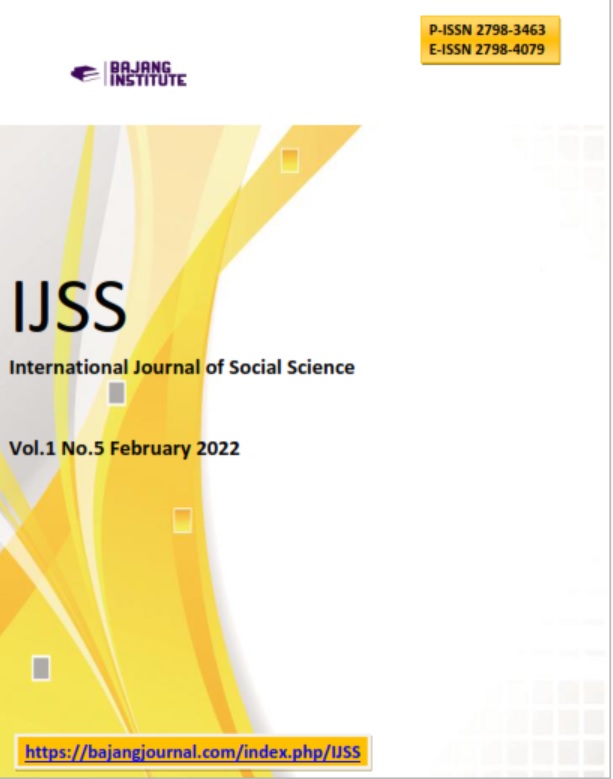MODERN TECHNOLOGY TO DIAGNOSE EARLY POSTPARTUM HEMORRHAGE IN ISLAND AREAS : A SYSTEMATIC REVIEW
DOI:
https://doi.org/10.53625/ijss.v1i5.2429Keywords:
Postpartum hemorrhage, Measurement of blood loss, DetectionAbstract
Mortality and morbidity due to bleeding occur due to delayed care. On the island, more advanced technology models based on the 4.0 digital development facilities and infrastructures are important to improve the health service quality. This literature review identifies modern technology-based bleeding detection as an effort to detect and diagnose early postpartum hemorrhage on the island. This systematic review study selected the data with the PRISMA protocol method. The researchers took 12 journal article outlets with years of publications from 2011 until 2020. The researchers found 587 articles. However, the most relevant articles with the applied keywords were 12 articles. Various modern technology-based detections for bleeding applied pantograph, gravimetric, bag collector, under-buttock, SAPHE mat, and scoring measurement to efficiently promote early bleeding. These investigated models were more effective than visual estimation with effectiveness percentages of 25-89%. Technology-based detections could early detect and facilitate postpartum hemorrhage and provide immediate care. High technological advancement in the health field facilitates the patients' care, especially in islands that need immediate action. The results of this research are useful to promote further research about modern-technology-based models to detect and diagnose postpartum hemorrhage in islands.
References
P. K. Wardani, “Faktor-Faktor yang Mempengaruhi Terjadinya Perdarahan Pasca Persalinan,” J. Aisyah J. Ilmu Kesehat., vol. 2, no. 1, pp. 51–60, 2017, doi: 10.30604/jika.v2i1.32.
WHO, “Maternal Mortality,” 2017. .
B. P. Statistik, Profil Penduduk Indonesia Hasil SUPAS 2015. 2015.
E. C. Atukunda et al., “Measuring post-partum haemorrhage in low-resource settings: The diagnostic validity of weighed blood loss versus quantitative changes in hemoglobin,” PLoS One, vol. 11, no. 4, pp. 1–10, 2016, doi: 10.1371/journal.pone.0152408.
K. Made, U. Narotama, U. Narotama, T. Purworusmiardi, and U. Narotama, “Condition of Early Warning on Maternal Health and Infant Immunization,” no. February, 2019.
Trio Setiowati, Ilmu Kesehatan Masyarakat. Jakarta: Refika Aditama, 2012.
A. Hancock, A. D. Weeks, and D. T. Lavender, “Is accurate and reliable blood loss estimation the ‘crucial step’ in early detection of postpartum haemorrhage: An integrative review of the literature,” BMC Pregnancy Childbirth, vol. 15, no. 1, pp. 1–9, 2015, doi: 10.1186/s12884-015-0653-6.
J. P. Souza et al., “The development of a Simplified, Effective, Labour Monitoring-to-Action (SELMA) tool for Better Outcomes in Labour Difficulty (BOLD): Study protocol Obstetrics,” Reprod. Health, vol. 12, no. 1, pp. 1–14, 2015, doi: 10.1186/s12978-015-0029-4.
S. Wahyuni, M. Ahmad, S. Syarif, N. A. Mappaware, P. Prihantono, and B. Bahar, “Digital Scales of Web-Based Partograph in Detecting the Early Postpartum Bleeding,” Glob. J. Health Sci., vol. 11, no. 6, p. 86, 2019, doi: 10.5539/gjhs.v11n6p86.
Z. Abbaspoor and L. Vaziri, “The effectiveness of a collector bag for measurement of post-partum hemorrhage,” Afr. J. Reprod. Health, vol. 21, no. 1, pp. 99–103, 2017, doi: 10.29063/ajrh2017/v21i1.9.
T. Lertbunnaphong, N. Lapthanapat, J. Leetheeragul, P. Hakularb, and A. Ownon, “Postpartum blood loss: Visual estimation versus objective quantification with a novel birthing drape,” Singapore Med. J., vol. 57, no. 6, pp. 325–328, 2016, doi: 10.11622/smedj.2016107.
G. Lilley et al., “Measurement of blood loss during postpartum haemorrhage,” Int. J. Obstet. Anesth., vol. 24, no. 1, pp. 8–14, 2015, doi: 10.1016/j.ijoa.2014.07.009.
L. Wilcox et al., “Diagnosing Postpartum Hemorrhage: A New Way to Assess Blood Loss in a Low-Resource Setting,” Matern. Child Health J., vol. 21, no. 3, pp. 516–523, 2017, doi: 10.1007/s10995-016-2135-5.
N. I-Tuporn, A. Ratanasiri, T. Nutravong, K. Boonprasert, and T. N. Pikul, “Risk scoring system for the prediction of postpartum blood loss over 300 mL at Chiang Rai Regional Hospital,” Siriraj Med. J., vol. 71, no. 2, pp. 110–116, 2019, doi: 10.33192/Smj.2019.17.
S. F. Fauziah, S. Suryono, and M. N. Widyawati, “Postpartum Blood Loss Measurement Using Digital Image Processing,” E3S Web Conf., vol. 73, pp. 1–6, 2018, doi: 10.1051/e3sconf/20187313023.
C. AbouZahr, “Global burden of maternal death and disability,” Br. Med. Bull., vol. 67, pp. 1–11, 2003, doi: 10.1093/bmb/ldg015.
T. Chen, R. Zhang, Y. Zhang, and W. Yuan, “Early potential metabolic biomarkers of primary postpartum haemorrhage based on serum metabolomics,” Ginekol. Pol., vol. 90, no. 10, pp. 607–615, 2019, doi: 10.5603/GP.2019.0105.
A. Takeda, W. Koike, S. Imoto, and H. Nakamura, “Three-dimensional computerized tomographic angiography for diagnosis and management of intractable postpartum hemorrhage,” Eur. J. Obstet. Gynecol. Reprod. Biol., vol. 176, no. 1, pp. 104–111, 2014, doi: 10.1016/j.ejogrb.2014.02.026.
A. Ikeda et al., “Novel subtype of atonic postpartum hemorrhage: dynamic computed tomography evaluation of bleeding characteristics and the uterine cavity,” J. Matern. Neonatal Med., vol. 7058, 2019, doi: 10.1080/14767058.2019.1571033.
F. G. Bonanno, “Hemorrhagic shock: The ‘physiology approach,’” J. Emergencies, Trauma Shock, vol. 5, no. 4, pp. 285–295, 2012, doi: 10.4103/0974-2700.102357.
A. Patel et al., “Drape estimation vs. visual assessment for estimating postpartum hemorrhage,” Int. J. Gynecol. Obstet., vol. 93, no. 3, pp. 220–224, 2006, doi: 10.1016/j.ijgo.2006.02.014.
H. M. F. Al Kadri, B. K. Al Anazi, and H. M. Tamim, “Visual estimation versus gravimetric measurement of postpartum blood loss: A prospective cohort study,” Arch. Gynecol. Obstet., vol. 283, no. 6, pp. 1207–1213, 2011, doi: 10.1007/s00404-010-1522-1.

















